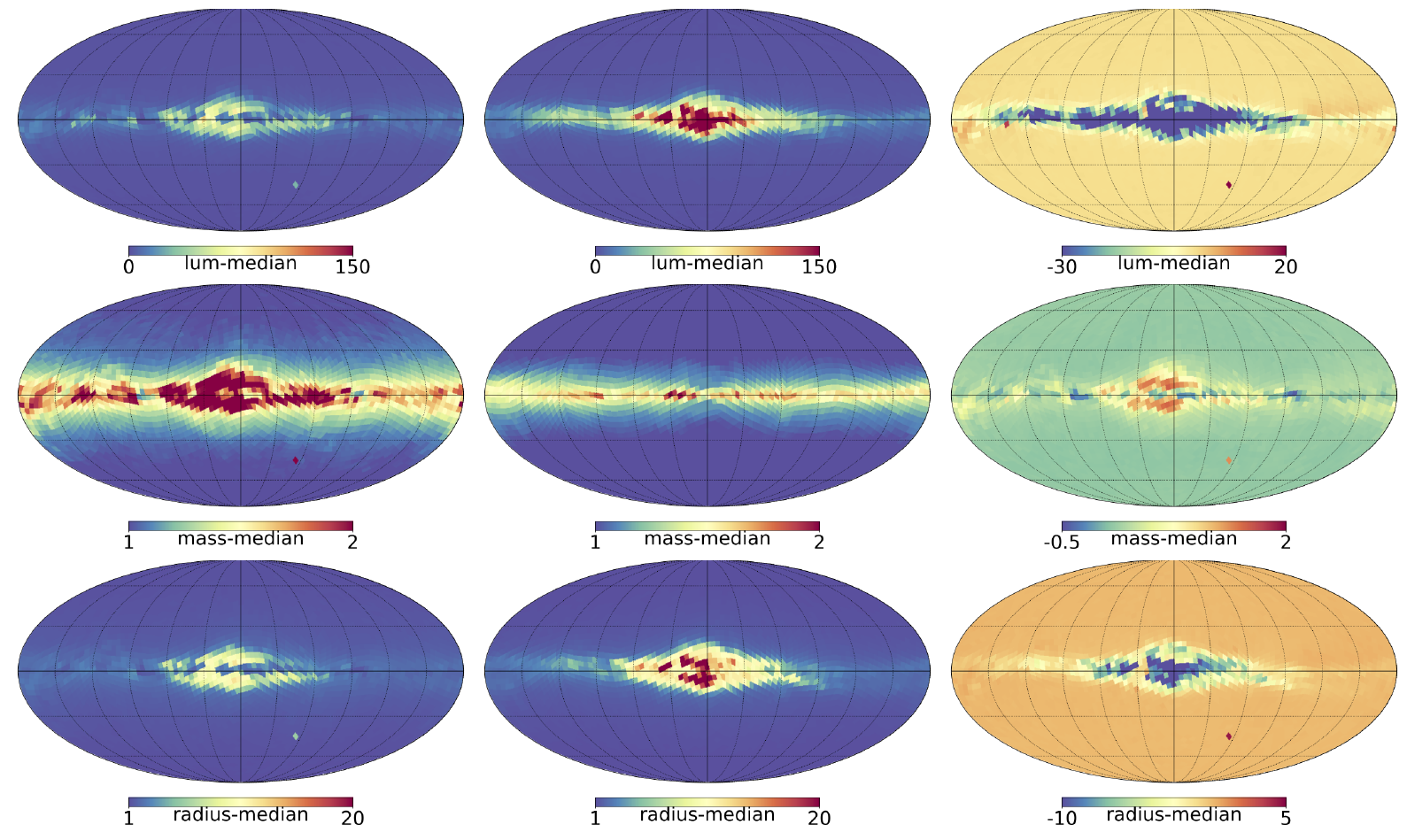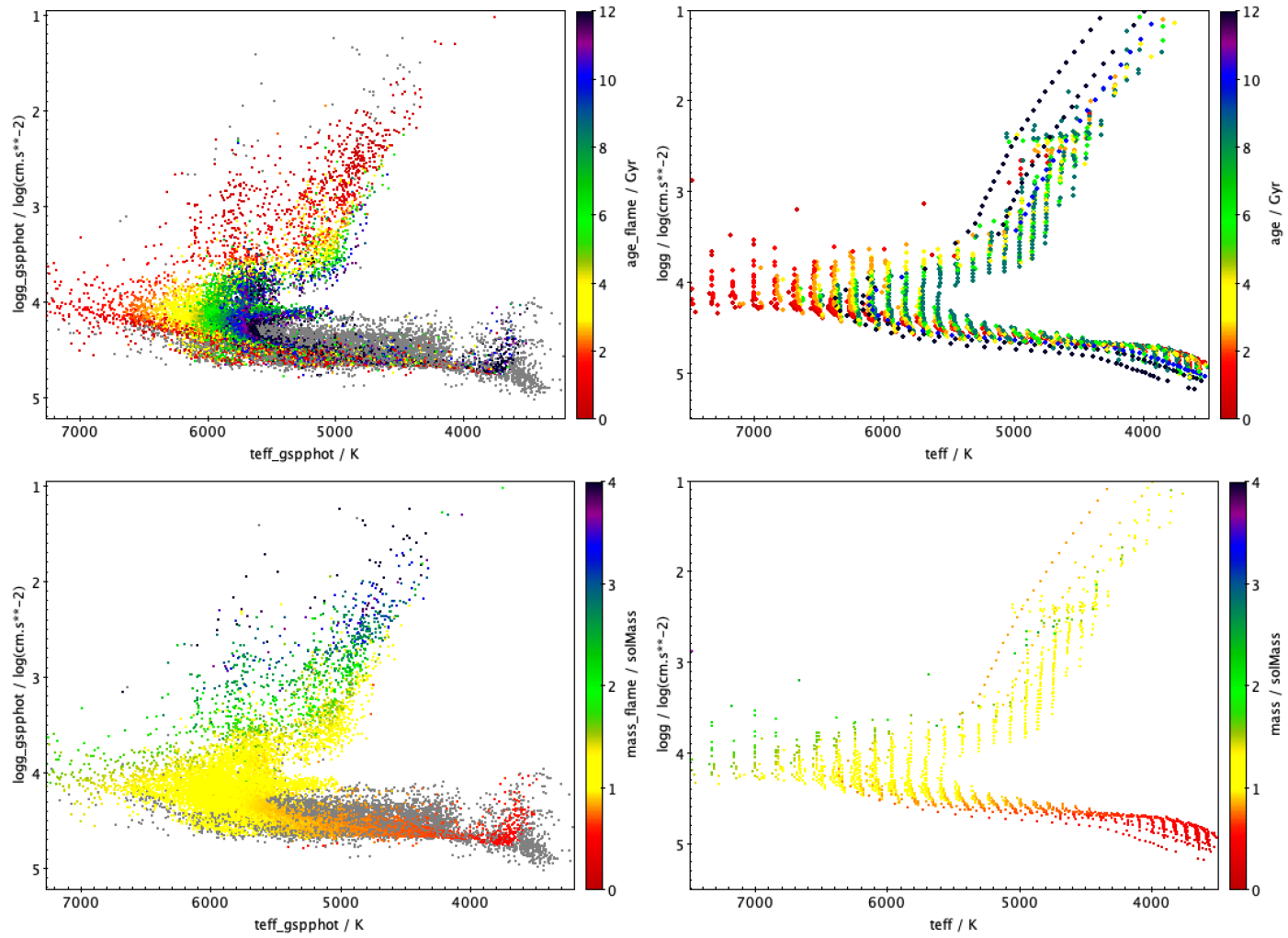14.3.8 Astrophysical parameters from FLAME
The distribution of luminosity, mass, radius, and age from FLAME are compared with simulated ones. The resulting maps are shown in Figure 14.53, in the =13 to 14 magnitude range, for Gaia DR3 (left panels), GOG20 (middle panels), and their difference DR3-GOG20 (right panels). The astrophysical parameters are luminosity, mass, and radius (from top to bottom), obtained by FLAME from the GSP-Phot parameters. The overall agreement is satisfactory accounting for uncertainties on the extinction model, and probable incompleteness of the data in the bulge.

We also performed direct comparisons of astrophysical parameters from queries in data and simulated catalogues, in different Galactic directions. They show that high mass and young stars are more numerous in the data, even in the high latitude fields where this is not at all expected. In order to understand these discrepancies, we investigate the locus of these stars in a (, ) diagram (see Figure 14.54). The excess of young stars is essentially due to the giant branch, and correspond also to high mass stars. Young ( 2 ) and massive ( 2 ) stars populate the giant branch in the data, and are not expected in the simulations. This is due to missing or incorrect model templates for the determination of the age, or not suitable for giants.

Summary of the results:
-
•
The distribution on sky maps give an agreement that is satisfactory accounting for uncertainties on the extinction model, and probable incompleteness of the data in the bulge.
-
•
Numerous high-mass young stars, on the giant branch, are not predicted by the model. This is due to missing or incorrect model templates for the determination of the age and mass for giants.